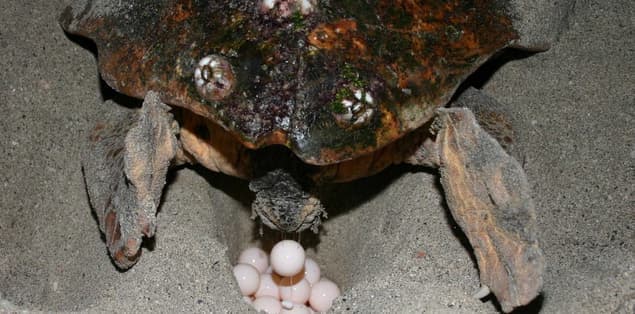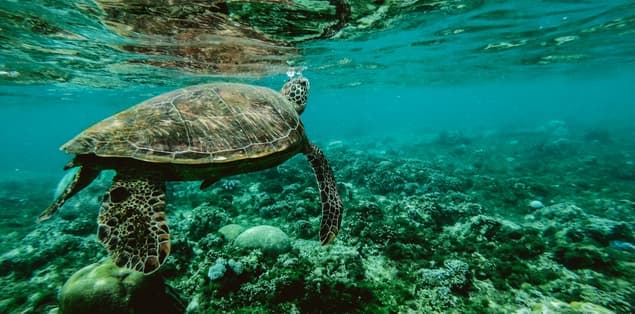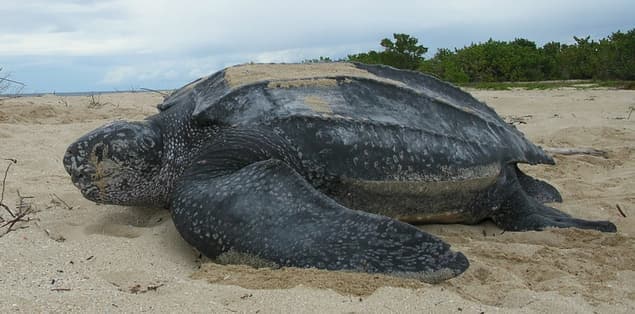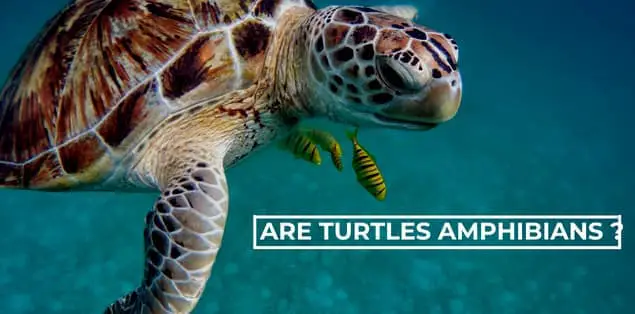So, are turtles amphibians? No! A turtle is not an amphibious animal. It is possible for an amphibian to dwell both on land and in the water. Turtles, on the other hand, are aquatic reptiles. Some turtles live on land as well as in water. However, there are several significant distinctions between reptiles and amphibians, which are discussed below.
Are Turtles Reptiles or Amphibians?

Turtles are cold-blooded creatures classified as reptiles. A reptile is a land animal with a scaly, hard shell. Amphibians have a smooth, scale-less water-permeable covering. Turtles are shielded by an impenetrable shell.
Turtles, like all reptiles, shed their skins. The procedure is carried out in parts rather than all at once like with snakes. Turtles lay hard-shelled eggs, thus they don’t need to lay them in water like amphibians.
Why Are Turtles Reptiles?
Turtles are classified as reptiles because they have four legs, a cold-blooded metabolism, and scales covering their bodies. Their lungs enable them to breathe like all other reptiles, including crocodiles, snakes, lizards, and the Tuatara.
Turtles can be found in a variety of shapes and sizes, including common snapping turtles, spotted turtles, Blanding’s turtles, painted turtles, and wood turtles. Physical mating is used by turtles and other reptiles. A few weeks or months later, the female deposits the eggs that have been internally fertilized. Before they hatch, they’ll need to spend a few more months in the egg.
In contrast, most amphibians fertilize their eggs by external means. The male fertilizes the female’s eggs after she has laid them. Turtles lay numerous eggs in seaside nests, and the hatchlings breathe air with their lungs even before they are born.
Another indication that a turtle is a reptile rather than an amphibian is that baby turtles do not metamorphosis. Amphibians can change shape; for example, a tadpole can become a frog. Turtles, on the other hand, lack a larval stage and are so classified as reptiles rather than amphibians.
Reptiles and amphibians perform essential roles in the environments in which they reside. Some, such as snakes that consume mice and other rodents, act as predators, reducing the population of their prey. Other herps are prey, such as frogs, which provide food for numerous kinds of birds, fish, mammals, and reptiles.
Are Sea Turtles Reptiles or Amphibians?

Sea turtles are among the oldest Turtle species on the planet, having stayed mostly unaltered for 110 million years. Aquatic turtles have a hard, flat, and streamlined shell that allows them to dive and swim.
Sea turtles are characterized by their prominent upper shell, or carapace, which is made up of numerous bones covered in horny scales, or scutes, which classifies them as reptiles.
They are reptiles, despite spending their whole lives in the water. The only exceptions are when they come out to lay eggs on the beach and when they initially hatch.
Are Snapping Turtles Amphibians?

Snapping turtles are reptiles, not amphibians, and belong to the class Reptilia. They are widespread across North America, from eastern Canada and New England to the Rockies. They’re famous for their size and ferocity.
The common snapping turtle is frequently found in shallow water, buried in mud. It is omnivorous but prefers to consume animal prey. It is typically non-aggressive in the water, but it can lunge and snap on land.
Are Box Turtles Amphibians?

The box turtle has a high-domed top shell that is predominantly brown with yellow or orange patterns. It has a tiny head with a hooked upper jaw and is a fascinating pet with a particular personality.
Box Turtles are reptiles because they belong to a group of animals with bone shells called Reptilia. To protect themselves from predators, box turtles typically grow very huge, thick, tank-like, dome-shaped shells.
Are Leatherback Turtles Amphibians?

Leatherback turtles derive their name from their leathery shell (skin), which is more flexible than other turtle shells.
Their range extends throughout both the Atlantic and the Pacific Oceans, making them the most widely distributed sea turtle species. Turtles migrate to California’s coast from the Coral Triangle every summer and fall to feed on the abundant jellyfish that live in that area’s oceans and tidepools.
Since Leatherback Turtle is a type of Sea turtle, it is a Reptile and not an amphibian. Adult leatherback turtles cover most areas of any reptile.
Are Musk Turtles Amphibians?

Musk turtles are named for the strong, musky stench they emit when startled. They can be found in slow-moving waterways in eastern North America. They are mostly aquatic species that seldom venture onto land.
Musk turtles are reptiles, not amphibians since they belong to the Reptilia class, not the Amphibia class.
Final Words – Are Turtles Amphibians?
A turtle is not an amphibian, but rather a reptile. Even though these two classes share many characteristics, there are several significant distinctions that allow them to be classified as reptiles rather than amphibians.
The eggs they lay are one of the key reasons it is not categorized as an amphibian. Turtles lay their eggs on land, which provides another use for eggs. Even sea turtles, which is a normal reptile activity, will come onshore to deliver their eggs!
Another explanation is that, unlike amphibians, they have scaly skin rather than permeable skin. Amphibians do not have scales and have thin, sensitive, permeable skin that is moist and absorbs water and oxygen.
Though there are similarities between these two classes like both these are cold-blooded animals and require external support to maintain their temperature, still, Turtles are classified as reptiles.
